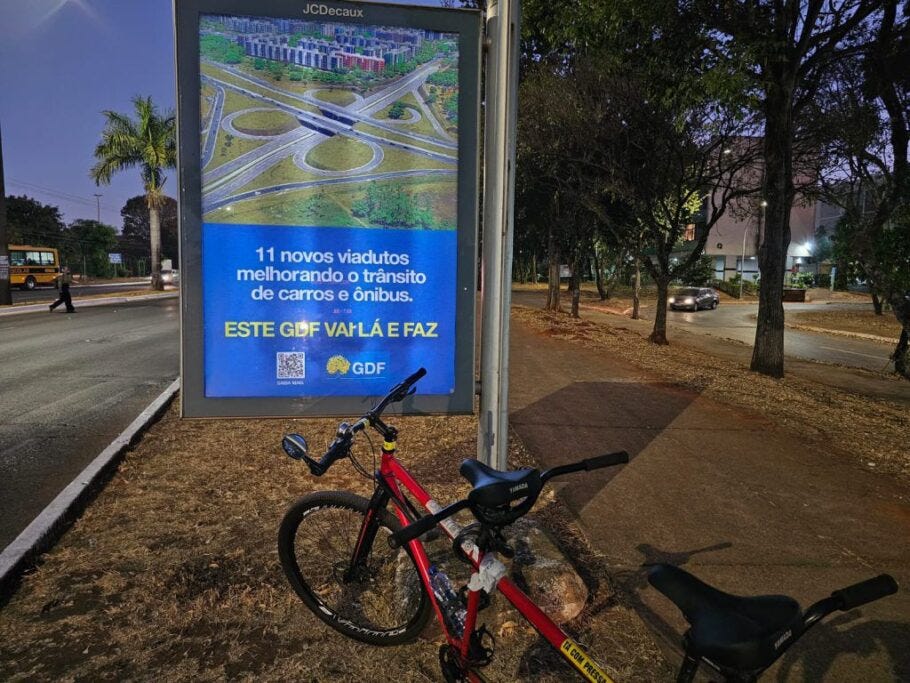The City that Eliminated Traffic Deaths
A guest post by Roberta Inglês, Editor at Caos Planejado
The following is a guest post by , Editor at Caos Planejado. The post, as you’ll soon see, is all about the scourge of traffic fatalities in Brazil — an issue that’s unfortunately also relevant for all of us living in North American cities today.
Roberta’s article was originally published in Portuguese and I’ve translated/re-posted it here with her consent. I’ve also added clarifying footnotes where useful for a non-Brazilian audience, but you can kinda just substitute The United States for Brazil as you’re reading and the lesson remains the same.
During the 12 months between 2024 and 2025, Helsinki recorded zero traffic deaths. Unfortunately, this is still a distant reality for many cities, both in absolute and relative terms—and it was only possible thanks to a series of urban planning measures such as lowering speed limits, redesigning streets, and prioritizing pedestrians and cyclists over cars. The Finnish experience offers valuable lessons for those who want safer, more human-centered cities.
What Helsinki Achieved is a Big Deal
It is important to highlight how significant Helsinki’s accomplishment is and what it represents. Some may argue that the city was able to reach zero traffic deaths because it has “only” 690,000 inhabitants—much fewer than capitals like São Paulo and Rio de Janeiro.1 If we want to take that criticism seriously, we should compare this data with similarly-sized Brazilian cities.
Ribeirão Preto, for example, has 698,000 inhabitants. In 2025 it’s already registering more than eight deaths per month and is on track to surpass 100 deaths if this pace continues. Joinville, with 616,000 inhabitants, recorded 90 traffic fatalities in 2022. And Uberaba, with 337,000 residents (half the size of Helsinki), reached 47 traffic deaths in 2023. If Helsinki’s success were solely due to its not-so-large population, we would see very different realities in these Brazilian cities.
It is also possible to compare relative figures. São Paulo saw 8.6 traffic deaths per 100,000 inhabitants in 2024. In the same year, Helsinki had only four deaths total, representing 0.59 deaths per 100,000 inhabitants. Even considering the population difference, the rate of traffic deaths in São Paulo is 14 times higher. Helsinki also stands out in the European context, performing considerably better than other capitals. Berlin and London record more than double the deaths per 100,000 people; in Vienna and Madrid, the rate is at least 40% higher than Helsinki’s.

What the Finnish capital has achieved is impressive even by European standards. But compared with Brazil, it is crucial to highlight the enormous gap — not by chance, but as a reflection of the very different paths urban planning has taken in the two countries.
How did Helsinki do it?
The secret is no single measure, but a long-term, multi-prong strategy. Helsinki embraced “Vision Zero,” a policy launched in Sweden in the 1990s and now adopted by cities around the world. It’s based on the premise that no traffic death is “acceptable” and that the goal must be not to reduce, but to eliminate fatalities completely. The idea is to create multiple “layers of protection” so that if one fails, another mitigates the impact of a traffic accident.
In Helsinki, this translated into concrete actions:
Reducing car speeds, with more than half the city’s streets limited to ~18mph.2
Redesigning streets, improving sidewalks and crossings to prioritize pedestrians and cyclists and discourage car use.
Maintaining high-quality public transit to reduce car dependency.
Increasing enforcement with speed cameras, automated monitoring systems, and police presence.
Running educational awareness campaigns.

To inform the physical interventions, Helsinki identified high-risk areas based on extensive data collection about accidents, vehicles, and residents’ perceptions. Beyond the measures cited above, the lack of this type of monitoring is also a widespread shortcoming in Brazilian urban planning.
Lessons for Brazil
The first step when analyzing examples like Helsinki’s is to avoid dismissive arguments like “that’s only possible there because the city isn’t very big” or “Brazil isn’t Europe, things are just different here.”3 Sometimes these reactions may have some merit, but they distract from what really matters: we are losing far too many lives in traffic every day, and this must change. Back in 1983, Helsinki recorded seven times more fatalities than in 2024—showing that the city made a deliberate, structured effort over the span of years to achieve this goal.
The most important lesson, however, lies in the list of Helsinki’s “Vision Zero” policies. Unfortunately, such measures are still very uncommon in Brazil, which explains the gulf between the two countries’ traffic death numbers. In Brasília, for example, a recent government billboard advertised the construction of 11 new overpasses, while almost nothing is said about improvements to crossings, sidewalks, and bike lanes. This is the reality in most Brazilian cities. The inversion of priorities in urban mobility is clear—and deadly.

That said, we do have some isolated examples of cities moving in a more Vision Zero–aligned direction. Perhaps the most notable is Fortaleza, which between 2014 and 2022 achieved a 58.3% reduction in traffic deaths. The “secret” was very similar to Helsinki’s: lowering car speeds, redesigning roads to prioritize pedestrians and cyclists, and increasing enforcement.
These cases show us that there is a viable path to preventing traffic deaths—and that it is already tested and proven. The challenge now is to follow it.
[Editor’s Note] São Paulo has a population of 12.3 million, that’s about 1.5 New York Cities. Rio de Janeiro’s population sits at 7.7 million, that’s around 2 LAs.
[Editor’s Note] The actual number is 30 Km/h.
[Editor’s Note] “we can’t possibly do that smart thing they do in Europe because…reasons” sounds just as bad in Portuguese as it does in English, I promise.




